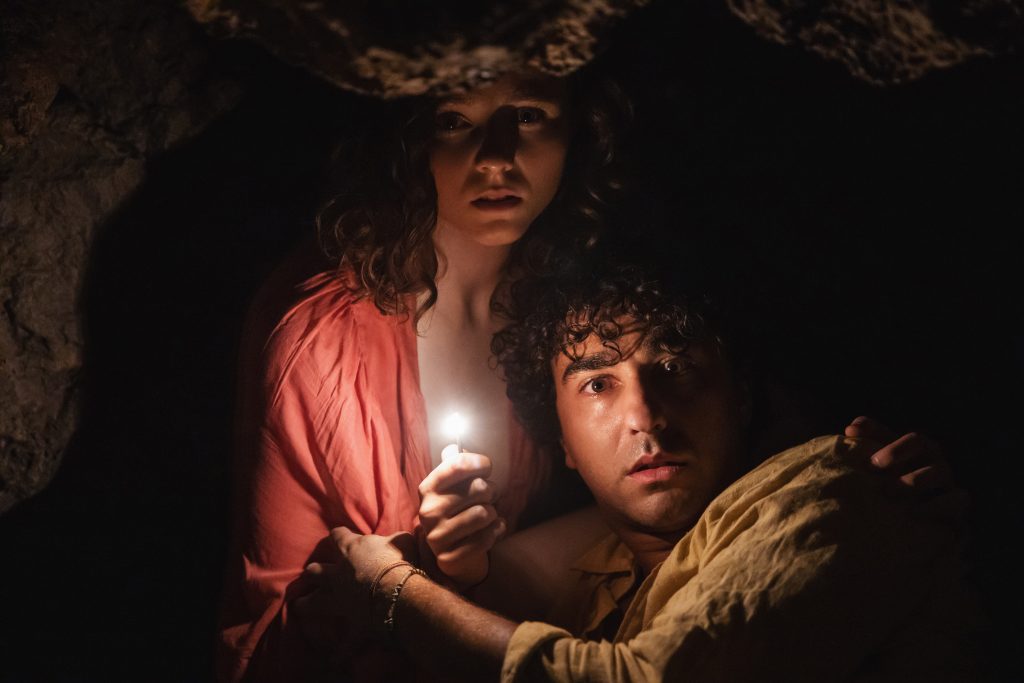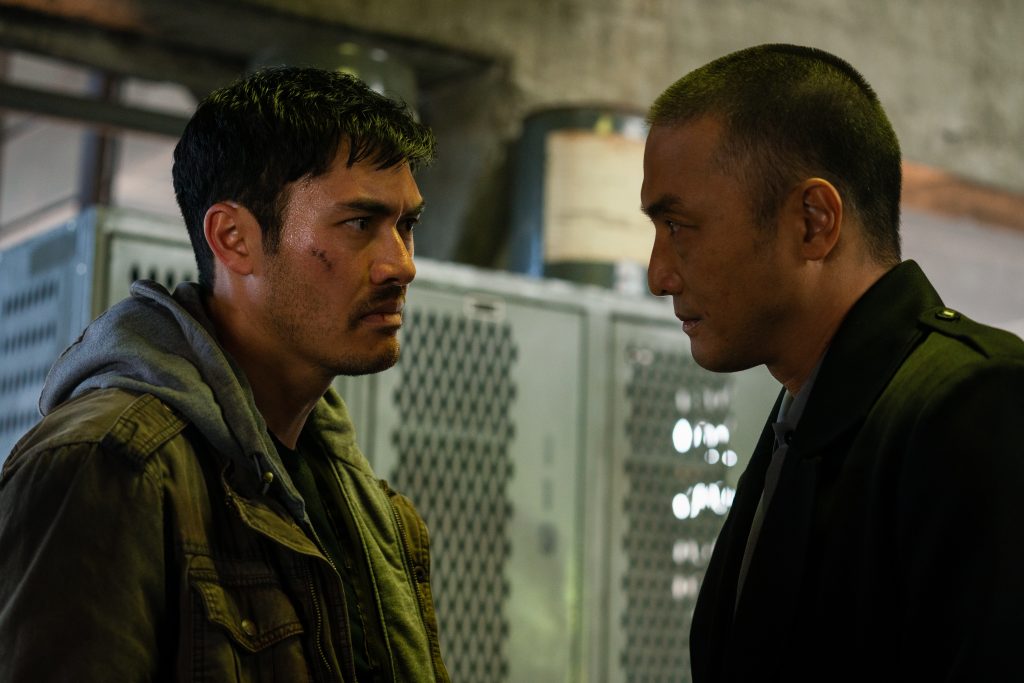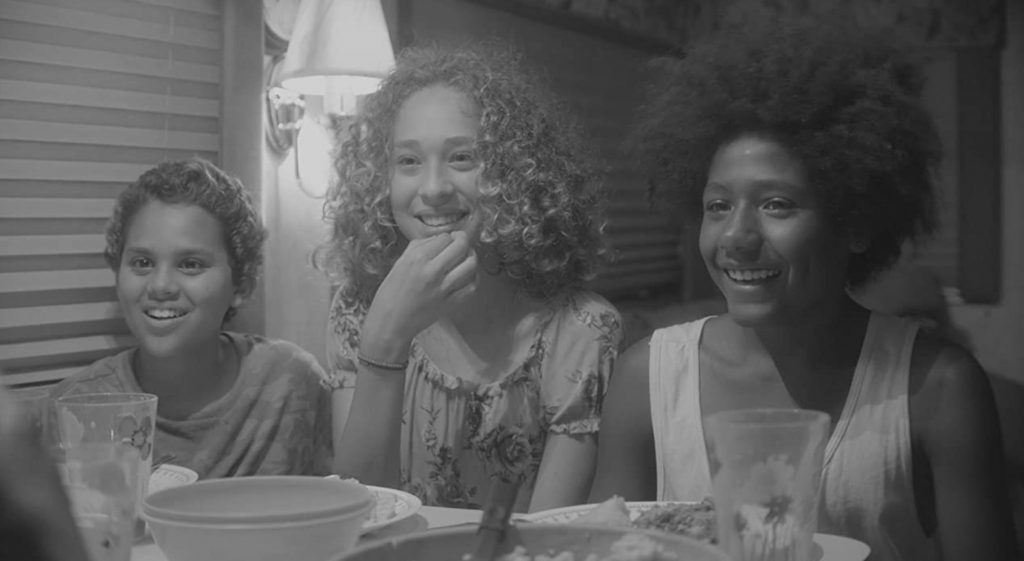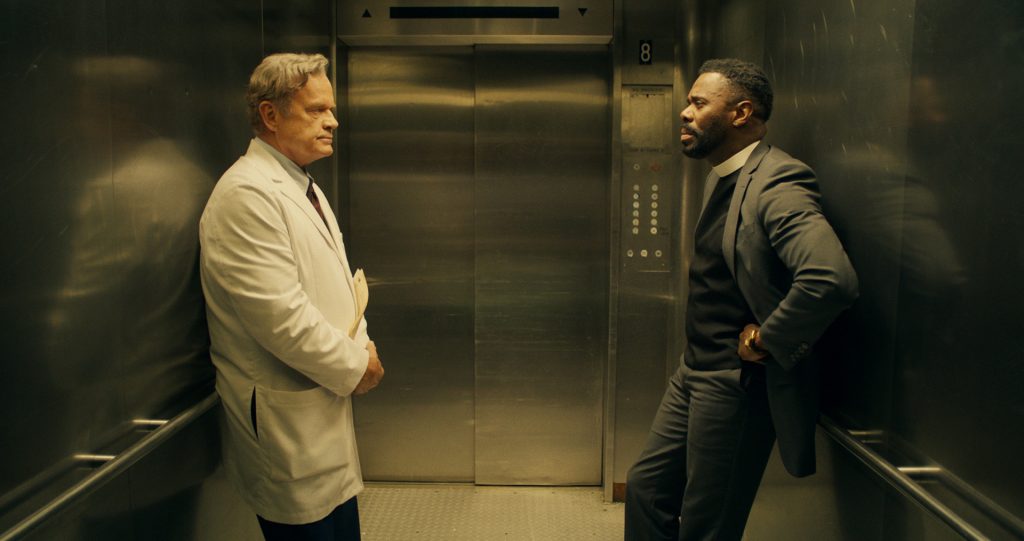July 24, 2021
by Carla Hay
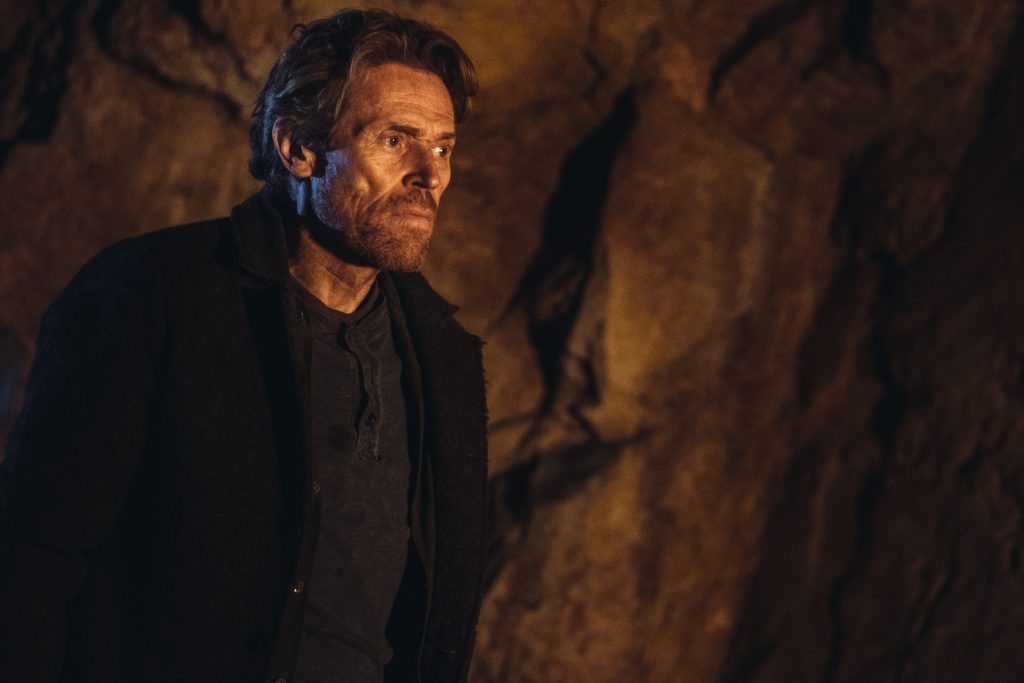
Directed by Abel Ferrara
Some language in Aleut and Russian with no subtitles
Culture Representation: Taking place in various locations around the world, the dramatic film “Siberia” features a predominantly white cast of characters (with some Asians, Eskimos and one African American) representing the working-class and middle-class.
Culture Clash: A loner, who is haunted by past tragedies and regrets, experiences a “fever dream” type of existence where he can no longer distinguish reality from his nightmarish visions.
Culture Audience: “Siberia” will appeal primarily to ardent fans of director Abel Ferrara and actor Willem Dafoe, because very few other people will enjoy this nonsensical and dull movie.

Some film directors were labeled “auteurs” early in their careers. And ever since then, certain people have been deluded into thinking that every movie that these “auteurs” make is somehow supposed to be important—even when these “auteurs” have made some substandard and ridiculous movies that would be trashed if those same movies were made by unknown filmmakers. Unfortunately, one of these pompous junk movies is the incomprehensible drama “Siberia,” directed by Abel Ferrara, who has been coasting on an outdated reputation of being an “auteur” filmmaker since the 1980s.
Simply put: “Siberia” (which Ferrara co-wrote with Christ Zois) is an irritating, self-indulgent, incoherent bore. It’s one of those garbage movies that’s pretentious and lacking in self-awareness of how bad it is. The only reason why people might praise this movie is because there are famous names involved in making the film. However, whatever claim to fame these people have, it’s for work that’s of much higher quality than the forgettable and embarrassing “Siberia.”
Willem Dafoe (a frequent collaborator of Ferrara’s) has the starring role in “Siberia,” which has no plot. It’s just a bunch of scenes strung together of Dafoe’s character in the movie having “fever dream” type of experiences, none of which make much sense or have any specific theme. The only conclusion that can be drawn from watching this movie is that Ferrara wanted to do yet another movie about a man having a mid-life crisis and couldn’t be bothered with writing anything that could pass as an engaging story.
Dafoe’s Clint character (who is American) isn’t just having a mid-life crisis. He seems to be having a mid-life psychosis. Almost everything he experiences in the movie might seem to start off looking “normal,” but then something demented happens to let viewers know everything is all in Clint’s imagination. There are bits and pieces of his past that come up to indicate that he’s haunted by some unresolved issues. However, there’s barely enough information to piece together what really happened, because it’s all muddled by more weird fantasies.
It’s all just a very pseudo-intellectual way to make viewers feel less than smart if they don’t understand the “true meaning” of a movie. Actually, sometimes there is no “true meaning” to a horribly dumb film with no real story. Sometimes filmmakers just want to mess around and make weird art that’s not supposed to make sense. If you’re into that sort of thing, then you might enjoy “Siberia,” because there are no redeeming qualities for this movie since it was obviously made only for the sake of being bizarre.
“Siberia” starts off with brief voiceover narration from Clint. He says that when he was a kid, during the summertime his father would take Clint and Clint’s brother up to a remote part of northern Canada to go fishing. They had Cree Indians as their fishing guides. The guide leader was an old trapper, who cut himself off from civilization 20 years before and communicated by shortwave radio. The guides lived in a camp that had Siberian Huskies that were “sweet but wild,” according to Clint.
The only purpose for telling this story is so there’s some context to the scenes where Clint is on a dog sled pulled by Siberian Huskies or when he goes fishing or camping with his Siberian Huskies nearby. What does Clint do for a living? He’s a bartender at a roadhouse in an unnamed area that gets heavy snow. It could be Siberia, but this movie plays too many guessing games on where scenes are taking place in the world, and it’s all irrelevant overall to the story.
Wherever Clint lives, there are hints that it seems to be close to the Arctic, because he has Eskimos and people who speak Russian as his customers. Clint lives by himself and there’s no mention of his brother again. However, based on hallucinations that Clint has later, he used to be married to a blonde (played by Dounia Sichov), and they had a young son (played by Anna Ferrara) who died, apparently at around 3 or 4 years old.
Don’t expect any details to be revealed about how this child died or what happened to Clint’s wife, because there are no details except hints that the wife blamed Clint for the son’s death and he feels guilty about it. She shows up in a hallucination or two where she tells Clint that she’s angry at him because he humiliated her. Don’t expect to find out more information about their relationship, because the movie doesn’t reveal it.
By the way, Clint is the only character in this movie who has a name, which is a reflection of the self-absorbed lunacy that stinks up this movie. Viewers can assume that Clint’s wife divorced him. It might be the only thing about this movie that makes sense, because who would want to be married to someone who’s this cut off from reality?
The roadhouse where Clint works (it’s unclear if he’s the owner or not) has a small slot machine for gambling. Clint tells a customer that he never plays the slot machine because “I don’t want to lose.” As soon as Clint makes that comment, the movie then abruptly cuts to a scene of Clint getting attacked by a brown bear in this roadhouse. And then, the next scene is of an unharmed Clint talking to two Russian-speaking women at the bar as if nothing happened. The bear attack is not spoken about or hinted at again. Yes, it’s that kind of incoherent movie.
When people speak in non-English languages (Aleut or Russian) in this movie, there are no subtitles. It doesn’t really matter because much of the dialogue in English doesn’t make sense. The two Russian-speaking women at the bar are a young pregnant woman (played by Cristina Chiriac) and her elderly mother (played by Valentina Rozumenko), who are the bar’s only customers in this scene. They appear to be having a pleasant conversation with each other, while Clint nods, even though he doesn’t understand what they’re saying.
For no apparent reason, except to have a gratuitious scene with nudity and sex, the pregnant woman unbottons her clothes, to expose her naked front side, and then Clint kisses her pregnant belly and lower—all while right next to the woman’s mother, who’s watching with an approving look on her face. Clint and the pregnant woman are next seen having sex in a bedroom. At least Voyeur Russian Grandma wasn’t there to leer at them while they were having sex.
But that isn’t the last that the movie shows Voyeur Russian Grandma. The next time Clint sees her, she’s dead or unconscious, with blood between her legs, and an unidentified bloody animal’s head (possibly a horse) in between her legs. Clint sees her and does nothing to try to get her medical help. What is the purpose of this scene? Nothing. However, someone using Freudian psychology would speculate that it’s a msyognistic scene thought up by someone who has “mother issues.”
In fact, much of “Siberia” has subtle and not-so-subtle sexism, because all of the female characters with speaking roles in the movie are either mentally disturbed, angry or used as sex objects. There’s a montage scene where Clint has sex with three different unidentified women: one white (played by Maria Knofe), one Asian (played by Cornelia Nguyen Luu) and one black (played by Ilham Midjiyawa). It might be Ferrara’s way of saying that he deserves credit for having a racial diversity checklist when it comes to misogynistic, gratutitous sex scenes where the females have to show their private parts but not the male star of the movie. And it should come as no surprise that the movie has a demon character (played by Stella Pecollo) that Ferrara deliberately decided should be a woman.
The hatred isn’t just directed toward women. Clint has a lot of self-hatred too. In one scene, Clint calls out the name “Mitchell” (don’t expect to find out who Mitchell is), before falling down a cliff into a cave, where he hallucinates seeing a version of himself in some water in the cave. His reflection scolds Clint: “You pretend to be open to all things but can’t see how close-minded you are. Your soul is outside of it and you must claim it … Time will pass and you’ll continue to be lost … You were never a loving son. You were a burden to him, and now to me.”
Predictably, when Clint hallucinates seeing his father, his father looks just like Clint. (Dafoe plays both characters.) Clint sees his father dressed in a longjohn in the cave, where Clint appears to envision being in some kind of nightmarish hospital setting. A woman in a hospital gown wanders by in a daze and keeps repeating, “Teach me how to die.”
In this “hospital” scene, there’s an overweight nude little woman in a wheelchair, which seems a tad exploitative of disabled little people. There’s also an overweight naked woman dancing as if she’s insane, while she keeps repeating, “I’m waiting for the doctor.”
In another hallucination, Clint has ended up in an unnamed desert where people wear turbans, live in tents and have camels as pets. In one of the tents, Clint sees his father dressed as a surgeon and operating on Clint’s son. Don’t expect there to be any explanation for this operation scene. Viewers will never find out if this happened in Clint’s real life and will never find out if Clint’s father was a surgeon.
In a different “daddy issues” scene, Clint wanders into a run-down house, where heavy-metal music is blaring and some dirty-looking people in their late teens and early 20s are gleefully kicking around a locked trunk-sized box that has someone inside who’s screaming in agony. Some horrible quick-cut editing shows that the person inside the box has managed to climb out. And it’s Clint’s son. Some viewers won’t be surprised because it’s another example of “Siberia” doing something purely for shock value, not to further a plot that doesn’t exist in the first place.
There’s a random scene of fully naked men being rounded up by soldiers and brutally shot to death. Who are these men? Don’t expect the movie to reveal that either. In another scene, British actor Simon McBurney has a “blink-and-you’ll-miss-it” cameo as a magician whom Clint meets at an unnamed location. Clint tells him, “I hear you’re a great magician. I hear you’re into the black arts.” McBurney’s character is not seen or heard from again, and viewers never find out why Clint wants to dabble in the black arts.
“Siberia” is like being stuck in someone’s unpleasant psychedelic hallucinations for about 90 minutes. A lot of people who take psychedelics say they want to have deeper enlightenment about life when they get to the other side. The only enlightenment that viewers will get from “Siberia” is that some overrated filmmakers are very good at convincing people to give them money to make crappy movies.
Lionsgate released “Siberia” in select U.S. cinemas, on digital and VOD on June 18, 2021, and on Blu-ray and DVD on June 22, 2021.


